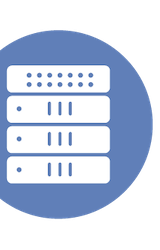On the latest episode of Datanauts, Tom Hollingsworth joins hosts Drew Conry-Murray and Ethan Banks to discuss the topic of transitioning to less technical roles as you advance in your IT career.
Cisco’s Wireless Partnership With Apple
Ethan Banks got an update from Cisco on their partnership with Apple, previously announced at Cisco Live US 2016. Cisco went into detail about their framework to allow for application prioritization from Apple devices across the network. This is done by a white list, and developers providing QoS marks on specific packets. They also revealed improved roaming support between access points, reducing the time of switching between to from 0.5-0.7 seconds to sub-50ms. Overall, Ethan found these both to be laudable efforts from Cisco.
ZeroStack Adds Learning To Their Automated Infrastructure
ZeroStack demoed their “self-driving” cloud at Tech Field Day last week. Ethan Banks gave it a look and came away impressed. He doesn’t see this as a VMware replacement right now, but the current tools and roadmap the company outlined certainly could make it tempting in a refresh cycle or two. Despite using the buzzwords of “machine learning” and “artificial intelligence” to describe their automation, Ethan saw it as a good way to automate a lot of the typical production tedium.
Apstra’s Ethereal Network State
Apstra has a really interesting idea. What if you could design your network based on what you wanted to do with it? Instead of chaffing with the constraints of vendors and hardware, Apstra provides an abstraction layer to allow you to do this. Ethan Banks saw their presentation at Networking Field Day. He wrangled with the idea that Apstra is simply providing configuration management. But instead, they are providing a solution that takes a look at the network as a whole, something network engineers rarely can do. Instead, you state what you want to do with the network, and the Apstra Operating System tells you how to make that happens. It then knows the intent of the network, and is able to heal and remediate to keep that intent in place. Ethan thinks they’re entering into a crowded market, but that kind of model could really allow them to stand out.
Capture, Filter, See – Ixia Vision ONE
Ixia is a company some may not associate with network packet brokers, but that changed when they acquired Anue Systems in 2012. Ethan Banks wrote up his impressions on this based on what he saw at Networking Field Day in November. He seemed particularly impressed by their Ixia Vision ONE visibility tool. Sure it has all the features you could want, but for Ethan the most important part was that it was easy to get working right away. With the increasing complexity of networks, raw capability simply isn’t enough. Ixia differentiates itself with it’s ease of use here.
Scale-Out Storage Through Disaggregation With DriveScale
Ethan Banks took a look at DriveScale’s disaggregated storage solution at Tech Field Day this month. Their overall strength relies on their flexibility. DriveScale makes it both easy to manage a true scale-out solution, while also providing potential savings down the upgrade path. They do this by separating storage from compute, so while the initial install they envision being cost-neutral, down the upgrade path, you don’t have to pay for storage you already have. Ethan’s heard similar “it pays for itself” pitches before, but seemed to think the DriveScale solution could actually deliver on that promise.
Igneous – On Premises, Cloud Managed, Scale-Out Storage
Ethan Banks gives an overview of what Igneous Systems presented at Tech Field Day this month. It’s an interesting solution, while acknowledging the plethora of open source options for developing a storage array out there, the Igneous team walked the delegates through why they developed their own data path and hardware architecture. Ethan digs into how the company deals with drive failure, their secret he dubs “the wide Igneous stripe” , a 20+8 layout scheme.
Improving Stateful Container Storage with StorageOS
Ethan Banks lays out some of the problems with containers. While originally envisioned for application development, they’ve quickly worked their way into infrastructure and operations. With their easy fluidity and reduced requirements, it’s easy to see the benefits of this containerized approach. But as their role has expanded, their deficiencies have become more profound. One of the major issues, containers are generally stateless, but as they expand further into other IT sectors, the need to map these to storage volumes become all the more glaring. StorageOS provides a solution to this problem by making it easy to manage the underlying storage of these containers. They do this by running at the application layer as a 40MB container, with tight integration with Docker, Swarm, and Kubernetes. Click through to Ethan’s piece for a complete breakdown of how StorageOS works, and how you can try it out for yourself.
Illumio Network Security For Applications Spread All Over
Illumio Network Security For Applications Spread All Over
Should Monitoring Systems Also Perform Mitigation.
Should Monitoring Systems Also Perform Mitigation.
Breach Presumption: The East-West Data Center Security Problem
Breach Presumption: The East-West Data Center Security Problem
Questions I’m Asking Myself About SD-WAN Solutions
Questions I’m Asking Myself About SD-WAN Solutions







